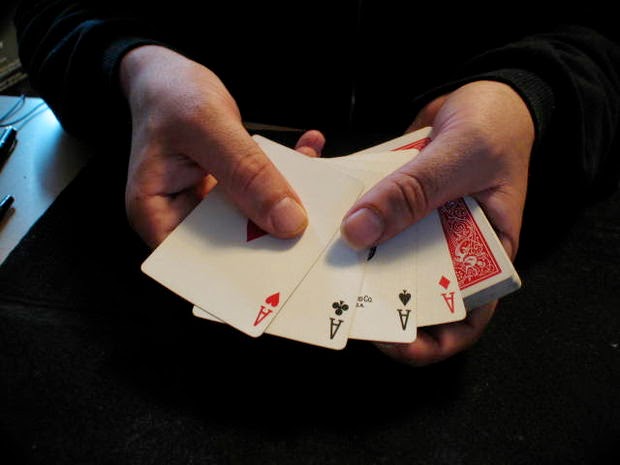Tuesday, September 30, 2014
Orbiting Logic
Games Reviewer
5:05 AM
brain
,
cards puzzle
,
cards riddle
,
logic
,
logic games
,
logical puzzles
,
orbiting logic
,
play puzzle games
,
puzzle
,
puzzles online
No comments
:
Colonel Tom Carpenter, during his fifth space mission, was being kept
awake by the blabbering of the Cape Canaveral Control Centre operator,
who offered him the following puzzle.
"Here's a deck of 52 cards, Tom. I'm taking the Aces and the Royals out of the deck. Do you copy that, Tom?"

"Roger," the yawning voice of the astronaut answered.
"Of the 36 remaining cards, I've drawn 5 of them. These 5 cards have the following properties:
(a) all four suits are represented here;
(b) there is no more than 2 consecutive ranks for each sequence (ie a 2 followed by a 3, or a 7 by an 8, or both, but not 2, 3, 4);
(c) the sum of the even ranks and the sum of the odd ranks produce two numbers: the difference between these two numbers is 9, but I won't specify whether it's the sum of odds being greater than the sum of evens, or viceversa.
(d) the sum of ranks of the red cards is exactly twice the sum of ranks of the black cards.
You awake, Tom?"
After a pause, Tom managed a faint "Roger."
"Ok, you should also know that:
(e) a hearts is a multiple of a clubs;
(f) the rank of a diamond is greater than that of a hearts;
(g) there are no 2 cards with the same rank.
Which cards did I draw? Tom, are you listening? Which cards have I got?"
Deduce which five cards he necessarily holds.
"Here's a deck of 52 cards, Tom. I'm taking the Aces and the Royals out of the deck. Do you copy that, Tom?"

"Roger," the yawning voice of the astronaut answered.
"Of the 36 remaining cards, I've drawn 5 of them. These 5 cards have the following properties:
(a) all four suits are represented here;
(b) there is no more than 2 consecutive ranks for each sequence (ie a 2 followed by a 3, or a 7 by an 8, or both, but not 2, 3, 4);
(c) the sum of the even ranks and the sum of the odd ranks produce two numbers: the difference between these two numbers is 9, but I won't specify whether it's the sum of odds being greater than the sum of evens, or viceversa.
(d) the sum of ranks of the red cards is exactly twice the sum of ranks of the black cards.
You awake, Tom?"
After a pause, Tom managed a faint "Roger."
"Ok, you should also know that:
(e) a hearts is a multiple of a clubs;
(f) the rank of a diamond is greater than that of a hearts;
(g) there are no 2 cards with the same rank.
Which cards did I draw? Tom, are you listening? Which cards have I got?"
Deduce which five cards he necessarily holds.
Orbiting Logic Puzzle Solution
During the next orbit, the sleepy but correct answer came forth from the astronaut: 2 of clubs, 5 of hearts, 7 of diamonds, 9 of spades, and 10 of hearts.Following from (g) - no two cards are the same rank - and (b), the strongest combination (ie highest ranks) possible is 10, 9, 7, 6, 4, which adds up to 36. If we write down all combinations of 2 numbers that have a difference of 9, and a maximum sum of 36, we'll have:
- 2, 11
- 3, 12
- 4, 13
- 5, 14
- 6, 15
- 7, 16
- 8, 17
- 9, 18
- 10,19
- 11, 20
- 12, 21
- 13, 22
- 6, 15
- 8, 17
- 10, 19
- 12, 21
- 8, 17 (and the 5 ranks would be 2, 3, 5, 6, 9)
- 10, 19 (and the 5 ranks would be 3, 4, 6, 7, 9)
- 12, 21 (and the 5 ranks would be 2, 5, 7, 9, 10)
Following (e), rank 2 must be clubs and 10 must be hearts, so rank 9 must be spades; following (f), rank 7 has got to be diamonds and rank 5 must be hearts.
Subscribe to:
Post Comments
(
Atom
)








No comments :
Post a Comment